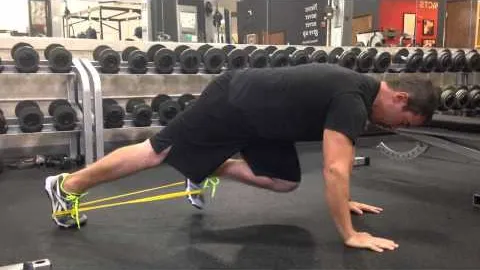
When it comes to building core strength and improving overall fitness, the plank march exercise can be a highly effective and challenging addition to any workout routine. This exercise specifically targets the abdominal muscles, obliques, and lower back, making it a fantastic option for those wanting to sculpt and strengthen their midsection.
The Basics
The plank march is a variation of the traditional plank exercise, which is a static bodyweight exercise that primarily engages the core muscles. To perform a plank march, follow these steps:
Variations
For those looking to further challenge themselves or add variety to their routine, there are several ways to modify or progress the plank march exercise:
1. Core Strength and Stability
The primary benefit of the plank march exercise is its ability to strengthen and stabilize the core muscles. By engaging both the rectus abdominis (six-pack muscles) and the deep stabilizing muscles, such as the transverse abdominis, the exercise helps develop a strong and stable core. This, in turn, improves posture, balance, and overall functional fitness.
2. Full-Body Workout
While the plank march predominantly targets the core muscles, it also engages the muscles of the upper body, including the chest, shoulders, and arms, as well as the muscles of the lower body, such as the glutes and hamstrings. This makes it a highly effective full-body exercise that can help enhance overall strength and endurance.
3. Improved Flexibility
Regularly performing the plank march exercise can lead to increased flexibility in various muscle groups, such as the hamstrings, hip flexors, and calf muscles. As these muscles become more flexible, range of motion is enhanced, reducing the risk of injuries during other exercises or daily activities.
4. Increased Spinal Stability
The plank march exercise requires maintaining a neutral spine throughout, which helps improve spinal stability. This is particularly beneficial for those who experience lower back pain or want to prevent future injuries.
5. Enhanced Performance in Sports and Daily Activities
The core stability and strength developed through the plank march exercise translate to improved performance in sports that require rotational movements, such as golf or tennis. Additionally, having a strong core is essential for maintaining proper form and technique in exercises like squats, deadlifts, and overhead presses.
To reap the benefits of the plank march exercise, consider adding it to your regular workout routine. Here are a few suggestions for incorporating it effectively:
Remember, it is essential to listen to your body and consult with a healthcare professional before starting a new exercise routine, particularly if you have any pre-existing health conditions or injuries.
The plank march exercise offers numerous benefits for core strength, stability, and overall fitness. By consistently incorporating this exercise into your workout routine, you can enhance your athletic performance, reduce the risk of injuries, and achieve a toned, strong core. So, grab a mat, get in position, and start marching towards a fitter self with the plank march!
If you're looking for a gym, fitness club or yoga studio, you've come to the right place.
You can find information about gyms in your area. Browse catalog of gyms and find gyms with classes which are you looking for.
On gym page you can find simple information like address, phone or website. You can find list of available classes. You can check availability of personal training or small group classes. On place page you can also see information about open hours.
You can find gyms near you with amenities, courts, studios and equipments.
Use our map to find gym at your city or district.
In Gym Navigator you can find list of exercises with movies for many body parts.
You can browse exercises catalog and find exercises the best of you.
You can also find exercises grouped into workout plans, which you can use to improve you body. Each routine show you exercises one by one and give you possibility to count you progress and count down rest time.